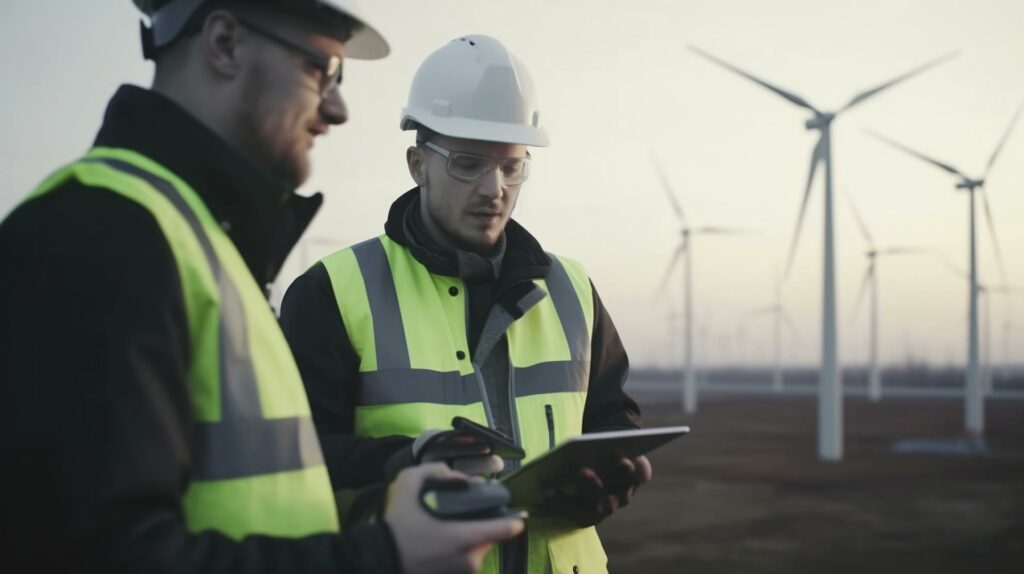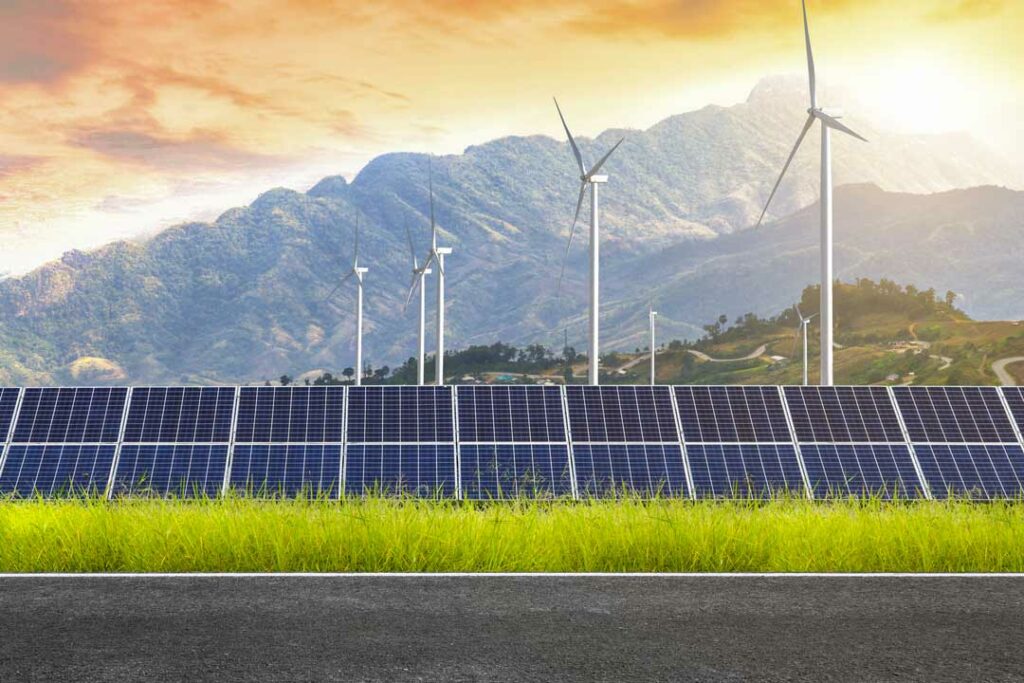The number of renewable energy projects around the world is multiplying. Each project involves a wide variety of stakeholders, which requires exemplary management.
In a report published in May 2023, the International Energy Agency (IEA) showed that, over the past few years, the clean energy sector has experienced a significant increase in investments. Worldwide investments rose from US$1,408 billion in 2021 to US$1,617 billion in 2022. In 2023, that number is expected to reach US$1,740 billion, a 24% increase from 2021. Propelled by the end of the global pandemic and the uncertainty over fossil fuel markets caused by Russia’s invasion of Ukraine, renewable energies – notably solar and wind power – are receiving the biggest slice of the pie.
In China, the European Union, and the United States in particular, the sheer scale of these projects comes with its own set of challenges, including stakeholder management. The vast number and diversity of stakeholders involved must be overseen by a rigorous and effective monitoring process. After all, many of these stakeholders have the capacity to heavily influence the outcome of a project.
Who are the stakeholders in renewable energy?
Stakeholders in renewable energy projects include:
- Central, state, and municipal governments: They provide the legislative framework within which developers must navigate.
- Investors: They provide the capital and expect a good return.
- Builders: They are responsible for building infrastructure, which can take years.
- Landowners and rightful occupiers: They are at the heart of negotiations that are essential to the project’s completion.
- Environmental groups: Their mission is to protect the environment and monitor developers’ activities.
- Local communities: They want their voices and concerns to be heard and to ensure that they, too, benefit from the project.

The importance of renewable energy in today's world
Stakeholder management in renewable energy projects is crucial for several reasons:
- Stakeholder diversity: Renewable energy projects often involve a multitude of stakeholders, each with their own interests, concerns, and expectations.
- Social acceptance: Without proper stakeholder management, opposition and/or resistance can delay or sabotage a project.
- Investment security: Risk management is paramount for investors and lenders. A project that mismanages its stakeholders can face delays, disputes, or other problems that can threaten to lower returns.
- Regulatory compliance: Renewable energy projects are subject to strict regulations, so working closely with regulatory agencies facilitates the approval process.
- Optimizing resources: Good communication and collaboration among stakeholders helps identify and capitalize on synergies, avoid duplication, and use resources more efficiently.
- Long-term value creation: Effective stakeholder management can lead to better long-term relationships, create opportunities for future projects, and enhance an organization’s reputation.
- Anticipating and managing conflicts: Many conflicts can be prevented, or at least resolved more effectively, by understanding and proactively addressing stakeholders’ concerns.
- Innovation and improvement: Stakeholder comments and feedback can provide new perspectives and/or innovative approaches to improving projects.
- Accountability and transparency: Effective stakeholder management ensures that projects meet social and environmental standards and that they are carried out ethically and transparently.
Learn everything about stakeholder management
in our ultimate guide
The role of stakeholders in shaping renewable energy policies
Renewable energy stakeholders play a vital role in the development of sector-related policies. For example:
- Companies, researchers, and experts contribute their knowledge and experience to help address sector-specific challenges and opportunities.
- Investors and financial institutions provide valuable information on viable financing methods to support renewable energy initiatives.
- Local communities and disadvantaged groups help ensure that renewable energy policies are created in a way that guarantees social and environmental justice.
In short, stakeholders help foresee potential challenges and propose solutions to eventually mitigate these, resulting in sounder, more sustainable policies. Their active involvement in the development of renewable energy guidelines ensures that policies are relevant, effective, and supported by a wide range of stakeholders.
An example
Challenges in managing stakeholders in renewable energy
Stakeholder management in the renewable energy sector has its share of challenges, which can be related to the scale and/or nature of the project. For example:
Creating an evolving and long-lasting record of engagement activities
As projects typically last many years, without a powerful tool it can be virtually impossible to keep track of all the stakeholders and interactions with them.
Communicating properly
It is important to know stakeholders well enough to communicate the right messages to the right people, and this, using their preferred communication methods.
Allocating resources optimally
Not prioritizing stakeholders based on their interests and influences properly could impair the way resources are allocated.
Demonstrating diligence and regulatory compliance
The epic scale of renewable energy projects and the large number of regulations with which to comply makes rendering accounts a delicate endeavour.
Consequences of failing to meet challenges
Projects can experience negative consequences if challenges are not handled accordingly.
For starters, not having a suitable and readily accessible register could compromise the quality and relevance of communications. Untracked changes in stakeholders, representatives, or managers could lead to communication breakdowns, duplication, and misunderstandings in the long term.
Quality communication is key to any organization’s success. As such, neglecting to account for the needs and particularities of each stakeholder could, for them, represent a lack of respect. This could also lead to miscommunication, misunderstandings, frustration, and complications in relationships.
Similarly, poorly allocated resources can lead to wasted time and/or delays. Poor assessment of stakeholders’ positions on a specific project may mean that organisations make unnecessary expenses, thereby underfunding other activities that would ultimately have a positive impact.
Finally, an organisation that has difficulty accounting for its engagement activities and legislative and regulatory compliance may well be refused future funding and permits.
Stakeholder management in different renewable energy sectors

The challenges of stakeholder management are basically the same regardless of the sector. However, there are certain specificities that depend on the type of renewable energy connected to a project.
Solar energy: Solar energy project developers must pay particular attention to the existing public electricity services, which are organised differently depending on location. As public utility providers have the final say on the interconnection of renewable energy sources in their territories, it is crucial that developers understand the regulatory environment in which these utilities operate, their structure, and business model.
Players specific to the solar energy industry also include parts manufacturers, electricians, HVAC (heating, ventilation, and air conditioning) installers, and roofers.
Wind energy: Wind farm developers must carefully consider the project’s immediate – and somewhat less immediate – neighbours because of the visual and noise impacts that come with their establishment. Besides concerns for their quality of life, nearby residents sometimes also worry about the impact the project may have on nature, the environment, and animals. Therefore, information campaigns must be put into place as soon as potential sites have been identified.
In the case of offshore renewable energy, neighbours are usually:
- Commercial and recreational fishermen
- Owners/operators of submarine cables and maritime infrastructure
- Maritime and port communities
- Marine wildlife and bird conservationists
Renewable energy stakeholder analysis
The importance of a primary analysis
The first step in the stakeholder management process is to undertake an in-depth analysis of all the parties involved. This primary analysis identifies, examines, and prioritises the groups and individuals affected by the project in order to know:
- all the parties likely to be affected by the project and/or influence its implementation;
- which stakeholders are in favour of or opposed to the project, and this, to what degree;
- the stakeholders’ concerns, expectations, and needs, as well as their levels of interest and influence regarding the project;
- the links between certain stakeholders;
- any risks, problems, and/or misunderstandings that could disrupt the project.
This data provides a wealth of valuable information about the project’s most important players, their preferred means of communication, where to focus engagement efforts, and other elements that could play a vital role in the project’s success.
Subsequent analyses are also carried out regularly to keep the data up to date.
An overview of the analysis process
There are generally four stages in the process of analysing stakeholders:
- Compiling a list of all the stakeholders based on previous projects and consultations with members of the organisation;
- Evaluating stakeholders using various analytical frameworks or matrices to compare data, including their influence and interest, the level of urgency in dealing with them, their support and knowledge of the project;
- Classifying the stakeholders into groups based on their shared interests and needs, and establishing levels of priority for each;
- Using the data collected to determine the best ways of approaching each group.
Borealis supports renewable energy projects
Borealis is a stakeholder management software that’s perfectly adapted to the considerable needs of large-scale projects, including renewable energy ones. It is based on a PLAN-ENGAGE-MEASURE methodology that makes it possible to:
- Centralise all stakeholder data and make it instantly accessible to anyone involved, anytime, anywhere, and from any device;
- Develop stakeholder engagement plans tailored to each stakeholder group;
- Analyse stakeholders’ positions more easily with a mapping tool, facilitating resource distribution;
- Ensure timely and appropriate communication with stakeholders;
- Demonstrate standard and regulation compliance through monitoring and reporting functions.
Borealis also offers different modules for managing environmental, social and governance (ESG) criteria, which can be extremely useful in renewable energy projects. These include:
Key takeaways
- Renewable energy ventures are large-scale projects, of which there are increasingly more due to attempts to reduce fossil fuel consumption.
- These projects involve an impressive number of stakeholders, each with their own interests and concerns. To help ensure a project’s success, promoters must put into place a flawless monitoring system.
- The duration of these projects is also a major challenge, reinforcing the importance of rigorous stakeholder management.
- Effective stakeholder management has many benefits, including reassuring investors, optimising resources, fostering good relationships, and providing a framework for conflict resolution.
- On the other hand, inadequate stakeholder management is likely to lead to negative consequences such as communication problems and wasted time and money, which can, ultimately, compromise a project’s success.
- Because of their nature and the breadth of stakeholders involved, renewable energy projects face specific challenges including project site neighbours, existing utility providers, landowners, and parties related to marine operations.
- Thanks to its tools and modules that are perfectly adapted to large-scale projects, Borealis software meets all the requirements of renewable energy projects, whatever these may be.
Contact us to discuss how Borealis can improve your stakeholder management and contribute to your project’s success.










